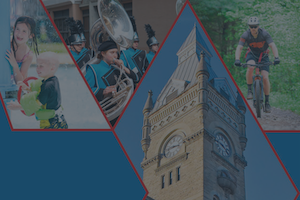The case for universal education choice
In an already astonishing year for advancing educational freedom, Pennsylvania closed out their legislative calendar by passing the largest expansion of Pennsylvania’s tax credit scholarship programs.
The political significance of Gov. Josh Shapiro, a Democrat, signing a $150 million expansion to a private educational choice program with a split legislature, is noteworthy. With a few exceptions, nearly all school choice enactments and expansions to date nationwide have taken place under a red trifecta of the governor’s mansion and both legislative chambers. This is welcome affirmation for a movement that has long declared what we know is true — expanding educational options for families is not, nor should it be, a partisan issue. Rather, choice cuts across political, geographic and demographic lines.
Pennsylvania’s school choice programs, the Educational Improvement Tax Credit (EITC) and Opportunity Scholarship Tax Credit (OSTC) programs, have indeed been transformative for many families. Pennsylvania is among 20 states plus Washington, D.C. ., with income-targeted programs that are intended to serve low- and middle-income students. For the most part, these states have had success delivering quality education to marginalized student groups.
Perhaps surprisingly, states are increasingly passing robust, universally eligible — rather than targeted — choice programs available to all or nearly all students. West Virginia and Arizona were the first states to go universal in 2022, followed by eight more states in 2023. Now 1 in 5 students lives in a state with universal or near universal choice.
Why are states increasingly pursuing choice for all, instead of choice for some?
- Parents want more options and choice is popular.
According to Morning Consult, 39% of parents would choose their regular public school, and 54% would choose some other school type, such as private school, charter school or home-school. Some 52% of parents would prefer to educate their child at home at least one day per week. Black parents especially want this kind of flexibility — with 61% responding that they prefer at least one day of education per week in the home.
People prefer a program that serves all families, rather than programs that serve some. For instance, 54% agreed that Education Savings Accounts should be available to families based on financial need, while an enormous 76% agreed that Education Savings Accounts should be available to all families, regardless of income and special needs.
- Universally available programs create new markets — new schools and new providers.
Two years ago, you’d likely never heard the term “microschooling.” But with the advancement of broadly available education savings account programs in Arizona, West Virginia and Florida, educators are increasingly seeking to enter the market to serve families in new ways — whether as school leaders, tutors, disability specialists, or other roles and providers.
- Universal programs create the broadest constituency.
The tragic case of Illinois’ Invest In Kids scholarship program provides ample warning of the importance of a broad constituency. The program serves 9,500 low-income, largely minority students from the Chicago area. Yet policymakers abandoned these students, who stand to lose their scholarships, not only at great personal cost to the families, but also straining the local public school system with the inevitable influx of students whose needs were being served by private schools. Universally eligible programs, like Social Security, are rarely threatened politically because the voter base is broad and motivated.
- Hoops for administrators and families
More layers of targeted program eligibility create more work for families to apply, and more work for administrators to vet who qualifies. Proving low-income status creates a disincentive for families to apply, unfortunately deterring the very students the program is intended to help.
- Expanding choice benefits students, without harming students who remain in public schools
Arizona and Florida, longtime leaders in education reform, are also leaders in academic growth for low-income students and students with disabilities. For decades, these states have had choice programs and have increasingly expanded them to families over the years. As it turns out, it’s not just the wealthy that benefits. Rather, students with disadvantaged circumstances have been the ones that benefit from broad-eligibility systems.
And what about students who remain in public schools? Opponents often decry harm to the public school system. Yet, rigorous research finds that expanding choice programs in terms of funding and eligibility lead to not only increases in academic growth among public school students, but also reduced absenteeism and suspensions. And choice overall, when designed right, improves student outcomes for both participants and public school students.
The best way to help marginalized students is not through targeted programs, but rather through universally eligible programs. And when any student is served well by any school, whether that be public, private, home-school or something else, that’s a win worth celebrating.
Martin F. Lueken, Ph.D. is director of the Fiscal Research and Education Center at EdChoice, a 501(c)(3) nonprofit, nonpartisan organization working to advance educational freedom and choice for all students as a pathway to successful lives and a stronger society. Marc LeBlond is Director of Policy there.













